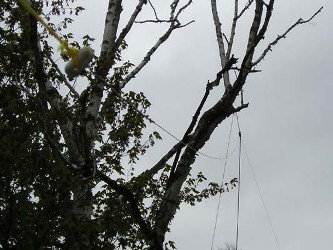
*Antenna Supports*
By: mysticraven
22 June 2010
Most Hams they are never happy with either their choice of antennas or their position. My present location has me in that predicament. I have a tower sitting on the ground simply because there is no place to put the guy wires. So my antennas are up a tree.

My 80 meter inverted Vee is hanging from the branch about forty feet up on a very dead birch tree. (A weight, fishing line and slingshot got it up in the tree but that is another story.) The other end is fastened to the railing of the deck. Yes I know tying a dead tree to the house is just plain stupid.
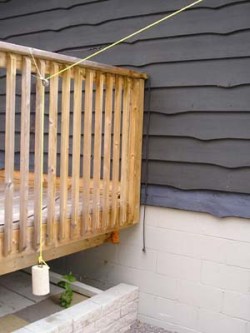
As you can see the poly rope from the antenna insulator comes down and runs through a small pulley then down to a weight. The beauty of this system is that the weight keeps the antenna tight but it is free enough to move with the wind and storms. A big ice storm will cause the antenna to sag and simply lift the weight. A rigidly fixed antenna simply will break under similar circumstances.
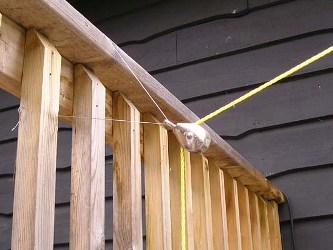
As you can see in this close up of the pulley system I have a dead tree safety system. I use two strands of 35 pound test fishing line (70 pound test total) as a breakaway system to protect the deck railing. It is replaced twice yearly and stands up well to the weather.
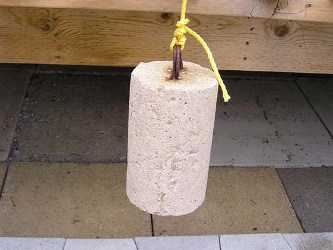
The counter weight for the Inverted Vee is simply an old oil can filled with concrete. Yes, oil came in cans a long time ago and that is how long I have been using this system. Feel free to improvise.
* * * * * * * * * * * * * * * * * * * *
For the dipole antennas I use a slightly different system.
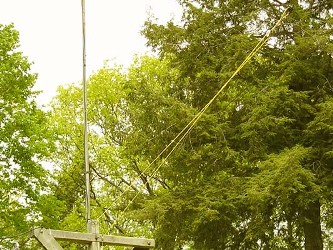
Please excuse the color in this picture but I upped the yellow portion of the spectrum on Photo Shop in the hope of making the rope stand out. This 20 meter dipole runs from a tree to my wife’ s double clothes line. The cross like structure holds two clothes lines a vertical pipe for the 2 meter Ringo Ranger as well as the end of the 20 meter dipole antenna. Planning pays off.
One end of the end of the rope is fastened to the top of the support structure then runs through a pulley at the insulator then through a second pulley at the post and then down to the weight.
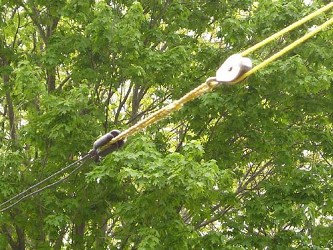
This photograph shows the first pulley fastened close to the insulator on the antenna.
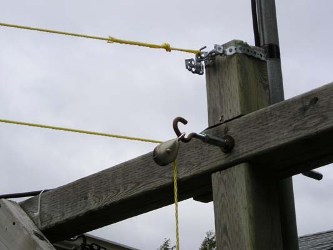
This photograph shows the poly rope fastened to the tope of the pole and the returning rope going through the second pulley to the counter weight.
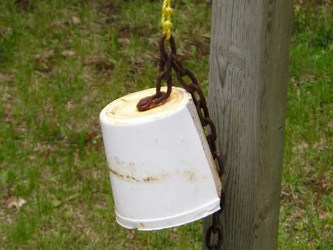
This picture is simply the counter weight of concrete poured in a two-pound margarine tub. (I use some of these for markers in our bay. The markers are fastened to the chain so the wave action does not move them.) The heavier weights and the double pulleys exert more then enough pull to take any sag out of the dipole antennas.
I do not take any credit for inventing this method to support the legs of antennas but it has served me well for many many years.
I hope this article will give you some ideas for your antennas.
mysticraven
www.alpharubicon.com
All materials at this site not otherwise credited are Copyright © 1996 - 2010 Trip Williams. All rights reserved. May be reproduced for personal use only. Use of any material contained herein is subject to stated terms or written permission.